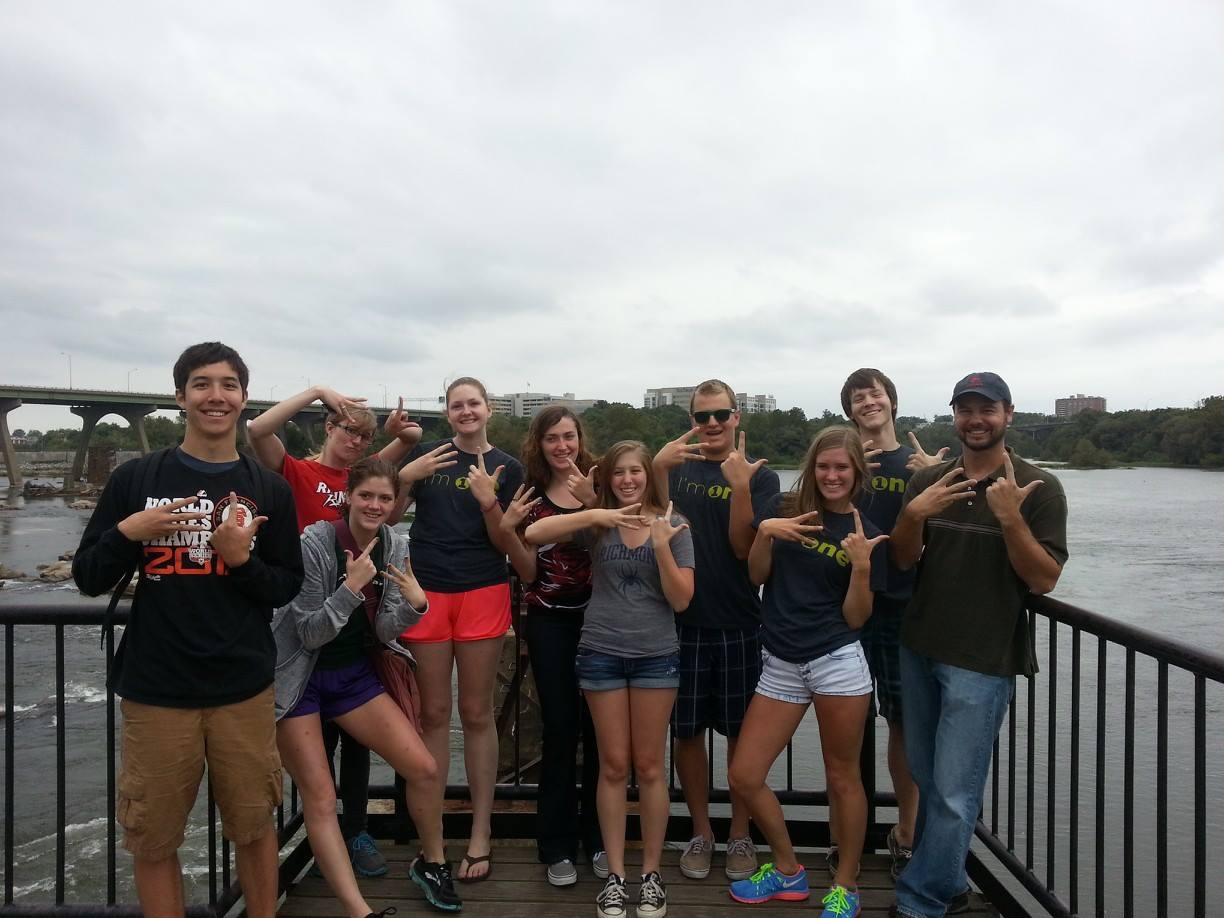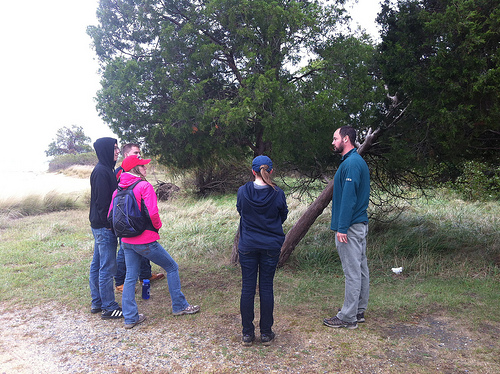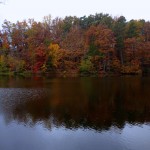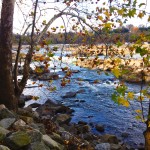University of Richmond’s accepted students’ day, circa March 2012: I came to visit the university and the city of Richmond for the very first time. I was insanely nervous, and the more I began to talk to other accepted students, the more I felt completely out of my element. Most of the students I talked to on that day were high school seniors who had applied here as their first-choice school, early decision, and they could think of no better place to spend their next four years. I applied to Richmond as a safety school; I had never even visited before accepted students’ day, and I thought it was going to take a lot to prove to me that this school was worth considering.
That was until I decided to take one of the optional tours of the school with my sister. My mother dragged my unfortunate youngest sister into one financial college planning seminar or another, and my sister Alyssa and I went on a campus tour by ourselves. I listened to the tour guide’s spiel and waited until the end before asking him what I considered to be one of the most important questions during my college search: what kind of outdoor recreational opportunities were there in the area? I am sure that there are many tour guides on this campus who may have balked at such a question. They may have mentioned the possibility of going to Belle Isle or Pony Pasture, but beyond that, they probably would not have known too much about the area. I just so happened to luck into having an outdoor enthusiast as a tour guide, and so needless to say, I got an earful. He told me all about the class IV rapids on the James River through the city of Richmond. He told me about Belle Isle and the number of little parks that I am now able to identify as being part of the James River Park System. He told me stories about camping trips he and his friends and fellow U of R students had taken over holiday breaks, and he stressed how close all of these options were to the university.

My lovely fellow Earth Lodgers (and TLB) bonding and flashing our sign
I was sold. It is certainly funny to see how things fall into place, and I can confidently say that tour alone greatly influenced my decision to enroll in the university that same day. It encouraged me to apply for the Westhampton College Outdoor Adventure living-learning community, and ultimately led to me choosing to apply to Earth Lodge for my sophomore year living-learning experience. I am obviously biased (as I am sure everyone else in Earth Lodge would also admit), but I think it is very important to be aware of your surrounding environment. However, this course has taught me the importance of not only being, but also understanding your place in that environment.
The implications of knowing the value of your place go so much further than just knowing off the top of your head how many minutes it takes to get to the nearest James River access point or the nearest public park. Comprehending place leads to a lot more in-depth, critical thinking and requires the utilization of parts of the brain that I certainly did not expect to be using in a geography class. I will be honest, I have not taken a geography class since middle school when the hardest thing we had to do was memorize states and countries and be able to fill them in on a map. However, I realized quickly that geography and place were about a lot more than locations within county, state, or even country boundary lines. Because the environmental impacts of our actions do not magically stop at these imaginary boundaries that exist only on maps, these places are all connected, and our daily actions many have ripple affects on all of these places that could last several years into the future.
Unfortunately, for most people, these affects only become obvious when the results are newsworthy. More often than not, this only happens when the results likewise disastrous. A prime example of this was the unfortunate situation of Kepone being directly discharged into the James River by the company Life Sciences in Hopewell, Virginia. It was not until deleterious results became prominent in the environment, health of the river’s inhabitants and physical health of the company’s workers that the production of Kepone was questioned and the company was ultimately shut down. What is more is that while this was a very prominent issue of point-source pollution, a lot of the severe environmental issues we face today are due to non-point source pollution and runoff that is a clear result of our society’s lifestyle choices.
Not many people stop to think beyond the practicality of driving their cars every day to get to work or fertilizing their lawns in the spring so they will be nice and green for the summer months. Some more environmentally inclined individuals may consider the runoff these activities will contribute to the environment in terms of their own local rivers and creeks, but many do not think much beyond local implications. Before this class, I fell into this category. I certainly never would have pulled up the run-off calculator on the James River Association’s website, nor would I have known that such a thing actually existed. I did not have a comprehensive understanding of the difference between my narrow, self-centered view of the environment and the much wider implications my daily actions cause. This course taught me that, and it has completely changed my way of thinking. As if the readings were not driving home this point enough, the trips that we took as a class to places like the Wetlands, Pony Pasture, Belle Isle, the Canal Walk, and our fall break trip to the Potomac River could not have opened my eyes any more to the wide breadth of what actually encompasses place. These trips made the concept of interconnectivity that we have discussed in class countless times, undeniable.
I will certainly never be able to look at the bank of a body of water again and not think about the value or condition of the riparian buffer along the water’s edge. I will think twice before I fertilize my lawn or decide to pave my driveway and further increase the impervious surfaces in the world. I will be aware of the watershed I reside in and my affects on that watershed, but I am one person. Strong environmental leaders possess knowledge, power, and passion, but they are ultimately nothing without the backing of the public. The environment needs a support group. It needs more aware individuals such as myself and the other Earth Lodgers, and it all starts with having a conversation. It starts with informing people about their surrounding environment, getting them excited about their place, and making them feel like they can make a difference. Whether professors, neighbors, friends, or perhaps a friendly college campus tour guide informs them, the resulting enthusiasm for the environment has the potential to be great.
William Cronon says it beautifully in his article “The Trouble with Wilderness; or, Getting Back to the Wrong Nature,” when discussing the difference between two trees, one in the wilderness and one in a garden. His discussion on the topic goes as follows:
“Both trees in some ultimate sense are wild; both in a practical sense now depend on our management and care. We are responsible for both, even though we can claim credit for neither. Our challenge is to stop thinking of such things according to set of bipolar moral scales in which the human and the nonhuman, the unnatural and the natural, the fallen and the unfallen, serve as our conceptual map for understanding and valuing the world. Instead, we need to embrace the full continuum of a natural landscape that is also cultural, in which the city, the suburb, the pastoral, and the wild each has its proper place, which we permit ourselves to celebrate without needlessly denigrating the others.”
- Whoa! Look at that riparian zone buffer right here at the University of Richmond!
- The riparian zone buffer on the bank at Belle Isle.
We, as a society, need to have a better understanding of our place, the connectivity between our daily actions in our immediate environment and the affects on all of the surrounding areas, whether we find them particularly “natural” and worth protecting or not, because at the end of the day, it is all connected.



